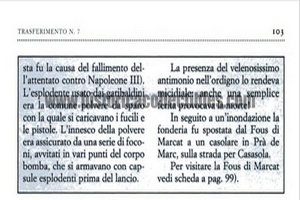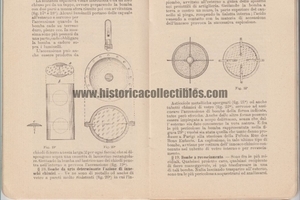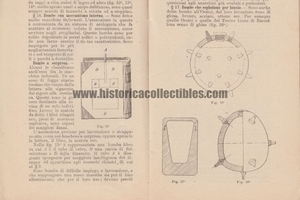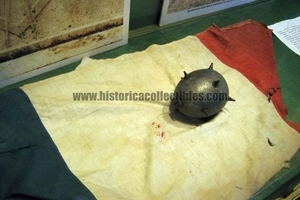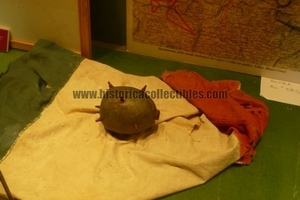Orsini Bomb mod. 1864, Friulian Risorgimento Revolts, 1864
"Orsini" bomb mod.1864 (totally inert and regularly provided with a deactivation certificate) specially made on the occasion of the Friulian Garibaldi insurrection planned by the Action Party after the proclamation of the Kingdom of Italy. During the preparations for Garibaldi's insurrections in Friuli, 2 expert foundrymen from Treviso built 550 examples of Orsini bombs.
The Orsini bomb is a forerunner of the hand grenade; ovoid in shape where the explosive used by Garibaldi was the common gunpowder with which rifles and pistols were loaded. Rather than using a fuse or any timed system for its activation, the ignition of the powder was ensured by a set of fires, screwed into various points of the bomb body, which were armed with exploding capsules before launch. The impact of the hand-thrown bomb against a solid obstacle, at any angle, caused the ignition of the capsules (detonation) and consequently of the entire device.
The presence of the zinc and antimony alloy used to make the bomb, requiring a lower melting point, made it extremely poisonous and deadly: even a simple wound caused death.
At first the workshop where the bombs were produced was set up in a natural cave called the "Fous di Marcat", one kilometer north of the town of Navarons (fraction of the Municipality of Meduno, Province of Pordenone - Friuli). The cave is part of a series of cavities, produced by meteoric erosion, located along a fault fracture of Mount Trep: the set of these gorges takes the name of "Fous dal Trep". The name (Trep local toponym; in the Tabacco map it is called "Ciù Cul del Signour", 947m) could be climbed via a path that touched the mowable meadows of the eastern side, passing right inside the "Fous".
The presence of a perennial spring, the hidden position and the proximity to the town were favorable elements in deciding to install the foundry there. Following a flood, the foundry was then moved from the "Fous di Marcat" to a farmhouse in "Prà de Marc", on the road to Casasola.
On 16 October 1864, around fifty men armed with Orsini rifles and hand grenades, with the tricolor on their heads, led by romantic figures of idealists, patriots veterans of Garibaldi's battles, set off from the small and isolated mountain village of Navarons towards Spilimbergo and Maniago with the aim of attacking the Austrian garrison, occupying the gendarmerie barracks, raising the tricolor flag there, inviting the populations to rise up against the Austrian Army.
Thus began the first act of a complex war for gangs of Mazzini and Garibaldi, whose aim was to provoke the intervention of the Royal Italian Army and Garibaldi for a definitive liberation of Friuli, Venezia Giulia, Veneto and Trentino which they were then under Austrian domination.
The existence of three other examples is known to be kept in the War Museum of Rovereto, in the Andreuzzi House Museum in the municipality of Meduno and in the Risorgimento museum in Udine.
Historical object from Garibaldi's Risorgimento period.



